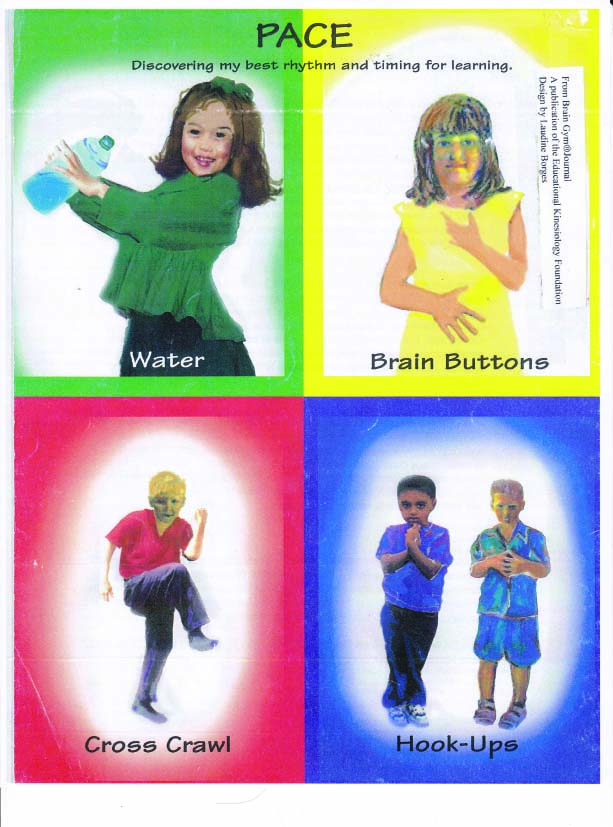Pace - a four-step Brain Gym® warm-up that takes less than four minutes. This warm-up makes you feel instantly focused and ready to begin any task or meet any challenge.
1. Water - do you feel energized? Energy is usable heat. This heat comes from
electrical connections within the body. During stress, moisture in the body moves
to the surface of the skin, away from the mouth and internal organs, creating a
"dry mouth" effect and damp palms. Water helps to rehydrate the body, acting as the solvent necessary for the electrical connections along neuronal pathways that give us sustained energy. Sipping water helps reestablish hydration as the high gear mode.
2. Brain Buttons - Are you thinking clearly? Clear thinking depends on
neurological organization between the eyes and lateral (cerebral) hemispheres.
Visual or adrenal stress, or chronic tension in the neck and shoulders, can create a
condition known as ocular lock, the inability to access both eyes together.
Ocular lock is temporarily alleviated, in most cases, by Brain Buttons, which
reestablish the organization necessary for all skills that involve crossing the visual
midline. Brain buttons helps to reestablish both eyes together as the high gear
visual mode.
3. Cross Crawl - Do you feel active-ready to move spontaneously as the needs of
the situation dictate? Integrated learning requires the availability of the whole
brain and body-a sense of the body functioning as an active, synchronized
system. Cross crawl prepares the whole body to move with the brain, as its
contralateral movement activates left/right, top/bottom and back/front areas of the
brain and body simultaneously. Cross Crawl helps to reestablish the physiology
as a high gear mode (a context for learning).
4. Hook-ups - Do you feel positive toward yourself and your feelings in the present
moment? Preparation for new learning requires presence of mind and self acceptance
within the now moment. Emotions (energy in motion) sometimes run
counter to our thoughts and intentions. Hook-Ups helps to integrate emotions,
so they are more consistent with our stated goals.
Information on this page from SMART MOVES Why learning is not all in your head.
by Carla Hannaford, Ph.D.
